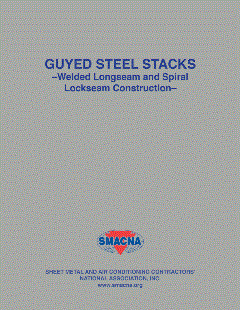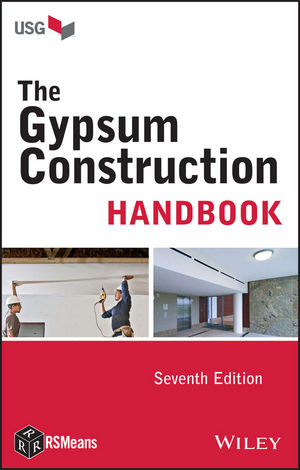
A column is a vertical building element that provides structural support by carrying a load in compression. Columns, one of the oldest designed structural elements, were used by the Greeks and Romans to construct massive temples and bridges. Contemporary open floor plan architecture makes columns less necessary; however, they remain integral to many structures and are regularly encountered during building renovation.
Building codes often require structural columns to maintain a fire-resistance rating. Chapter 2 of the International Building Code includes columns in a list of structural members defined as component parts of the primary structural frame of a building. Chapter 6 requires the primary structural frame, including the columns, to be fire-resistance rated in all Type I, Type IIA, Type IIIA, and Type VA construction. Type I and Type II, and to a certain extent Type III, buildings incorporate only noncombustible building elements and are typically constructed with steel, masonry, or concrete structural frames.
Steel columns usually require the installation of a supplemental protective membrane, such as gypsum board, plaster, or spray-applied fireproofing, to achieve a specified fire-resistance rating. Numerous published fire tests for gypsum-membrane steel column protection systems exist-there are over three dozen systems listed in the Fire-Resistance Design Manual-however, some contain a provision for no horizontal joints that can create an installation issue.
STEEL COLUMN PROTECTION SYSTEMS
Many steel column protection systems are based on Underwriters Laboratories Inc. design X528. As an example, note the adjacent detail for system CM 1402 from the FRDM, which requires two layers of 1/2-inch thick type X gypsum board to be installed on steel framing members.
Because a provision in the X528 design listing requires the gypsum board to be installed “without horizontal joints,” the problem becomes evident when the full vertical span (the floor to deck height) of the column to be enclosed is greater than the length of an available sheet of gypsum board.
In a building with a 10 foot floor to deck height, you can readily obtain the required length gypsum board from a distributor. But attempt to install the same system in the atrium of the building’s lobby where the vertical floor to deck height can easily exceed 14 feet, and a problem may occur: you generally can’t obtain gypsum board manufactured in excess of that length.
Fortunately, relief for the long span predicament can be found in the notes to Figure 721.5.1(3) and the charging language for the figure in Section 721.5.1. in Chapter 7 of the IBC.
The charging language in the code describes a method for providing a fire-resistance rating for a steel column that directly mimics the information contained in UL X528. (In fact, the related diagrams in the code are almost identical to those in the UL design listing). Footnote 3 to Figure 721.5.1.(3) contains the resolution to the column height problem: “(f)or multiple-layer applications, horizontal joints are permitted at minimum spacing of 8 feet, provided that the joints in successive layers are staggered at least 12 inches.”
Unlike most fire tests that require the installation of gypsum boards of a specific thickness, both X528 and IBC Section 721.5.1. quantify-with one specific exception for ¾-inch-thick board-the thickness of board to be applied to the system not as a specific number of layers of board but as a total thickness of gypsum board. In nearly every instance the total thickness of gypsum board required is one inch or greater.

Because the thinnest type X gypsum board is 1/2 inch thick, a correct installation typically requires the application of at least 2 layers of type X gypsum board to the framing. In that instance, the joints between layers must be staggered in accordance with the code requirements if the vertical span distance necessitates the installation of horizontal joints.
But there are some situations where the required total thickness of board can be achieved with a single layer of type X gypsum board. What to do in those instances where the vertical span of the column is greater than the length of available board? Two suggestions:
If the system requires a total of 5/8 inches of type X gypsum board, install two layers of 1/2-inch type X gypsum board. Stagger the joints as described in the code. By so doing, you will comply with the intent of the design (you have achieved the required thickness of board required) and the code (you can stagger the layers in accordance with the code).
If the system requires a total of 1/2 inch of type X gypsum board, install two layers of type X gypsum board. Stagger the joints as described in the code. You will certainly meet the total thickness mandate, as the thinnest type X gypsum board available is 1/2-inch thick material, and the joint staggering will comply with the code.
YES AND NOS
However, some do’s and don’ts as you move forward:
DO discuss your intent with the Authority Having Jurisdiction-i.e., the code guy who signs off on the system-before moving forward. Also involve the other party to the work contract, either the general contractor or building owner. Both need to be comfortable with the solution before it proceeds because it involves a modification to the approved design and transposes code requirements onto a fire test. The solution may also consume some leasable floor space.
DO make sure that you have calculated the total thickness of board using both the method in X528 and Chapter 7 of the code. In nearly every application, the calculated total thickness of gypsum board required will be the same for both methods; however, there may be instances where the code calculation produces a slightly greater required thickness. If you are going to rely on the code to address the situation, make sure that you are fully compliant with the code.
DO note that the above situation applies to column protection systems replicating those described in Figure 721.5.1(3) of the IBC. It may not apply to other column installations or be readily applied to other UL designs. As an example, note that another UL design, UL X526, has a similar limitation; however, X-526 incorporates sheet steel into the protection system and must be addressed separately. IBC Figure 721.5.1(2) should be referenced for assistance.
DON’T attempt to achieve the required thickness of gypsum board using 1/4- or 3/8-inch-thick gypsum board as neither is manufactured in a type X formulation. Two layers of 1/4-inch material do not equal 1/2-inch of type X gypsum board in a fire test.
In using the language in the IBC to resolve the situation, remember that Section 102 of the IBC states “(w)here differences occur between provisions of this code and referenced codes and standards, the provisions of this code shall apply.” In a situation of ambiguity, the code sets the precedent. W&C



